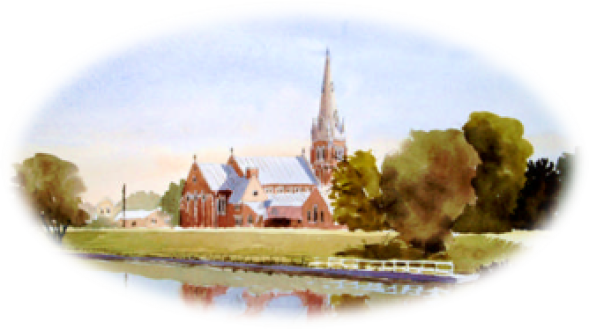Charlotte Charinton (1801 - 1888), Spalding Philanthropist
Research by the late Marion Brassington.
A Victorian Novelist - Anthony Trollope perhaps or George Eliot – might well have seen a potential plot in the apparently uneventful life of Charlotte Charinton, quiet spinster philanthropist in a small market town.
St Pauls Church, Low Fulney, Spalding (watercolour by Phil Biggs)
When Charlotte died in 1888, she left her estate, not to her sister’s grandchildren, but to be shared between Mr.Algernon Peckover, a Wisbech banker, and …… yes, the Revd. Canon Edward Moore.
The Ash family disputed the will. The local press speculated. “Should the dispute come within a public court, some very sensational evidence may be expected to be produced, and the legal struggle in which the principle figure of the Vicar of an important parish, advanced in years and rich in worldly goods, is likely to create no small stir not only in this locality but throughout the country.” But the case was settled out of court and the Revd. Ash received some remuneration. Canon Moore died in 1889.
But whatever the moral conflicts for those involved – of love v. class, family v. religion, religious calling v. worldly prestige, and the use or misuse of a powerful position – we all remain in Miss Charinton’s debt. South Holland, like most of Lincolnshire, is rich in mediaeval churches, and that the architectural glory of many local ones was preserved from neglect or misguided alteration owes much to the quiet munificence of Charlotte Charinton.


